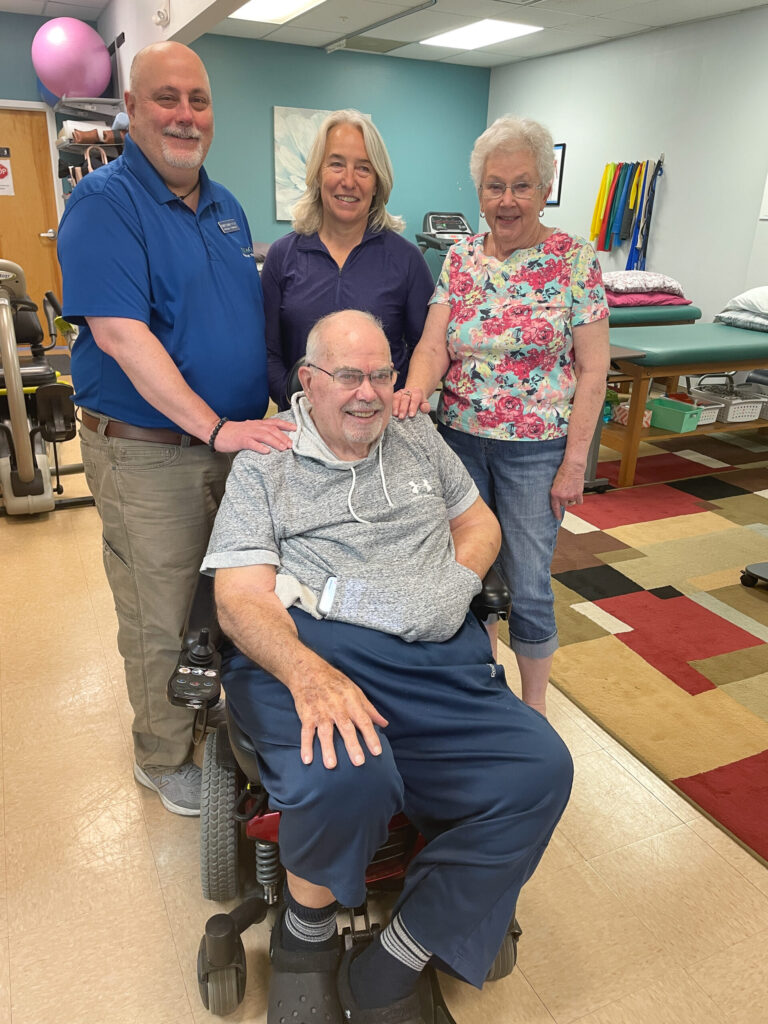
Aquatic Therapy Helps Reduce Pain

Aquatic Therapy has been part of medical treatment since the time of the Greeks and Romans. The use of water for therapy and exercise has weathered the test of time and is repeatedly cited for its many benefits. Even in today’s era of rapidly changing technological advancements, water still is a valuable tool in the rehabilitation of a wide variety of conditions.
Aquatic Therapy is a specialized area in the field of physical therapy. For years therapists have realized positive results when applying this water modality to a variety of patient populations. Water improves motion and flexibility as the warmth and massaging effects of the water allow muscles to relax while helping to reduce pain. The natural buoyancy reduces gravitation pull, lessening compressive forces, thus making exercises much easier to perform than on land.
Fact: A person immersed to the neck in water experiences an apparent loss of 90% of their body weight.
What issues can aquatic therapy help?
Arthritis
Water is the perfect medium for people with arthritic conditions of the spine, hips, knees or shoulders. The gentle warmth of the water, combined with the unloading of the joints, allows people increased mobility with less pain. The water also provides for accommodating resistance depending on the speed of movement. Therefore, a person can exercise within their limitations.
Following Surgery or an Injury
Aquatic therapy enables people to start exercising immediately in a stress-free environment within days of injury or surgery with little risk of re-injury. Many clinicians advocate aquatic exercise following surgical intervention, such as back surgery or a total joint replacement, to speed the overall recovery process. The aquatic environment helps reduce inflammation and decreases weight-bearing on an injured joint, which allows an injured area to exercise sooner and safer as compared to land.
Chronic Pain
Patients with chronic conditions are often fearful of their pain increasing and are generally reluctant to exercise. Due to their limitations and their fears, people are often trapped in a seemingly inescapable cycle. The pain causes the body to guard itself, which leads to immobilization and deconditioning. Aquatic therapy, by allowing the body to become mobile, helps break the pain cycle, giving patients the opportunity to exercise and condition their body. The forces of water provide resistance to movement allowing muscles to be strengthened. The decompressive forces of the water allow patients to progress faster through the healing process. People with chronic pain often feel they have few options for pain relief: however, the use of aquatic therapy can help them take the first step in the management of their conditions.
Low Back and Neck Pain
“Unloaded” deep-water exercise is advocated for patients with spinal pain. Deep water allows the patient to exercise all muscle groups and move all joints through complete range of motion while decreasing weight-bearing stresses to spinal structures. Buoyancy-assisted devices such as a vest or a belt can be worn by the patient to maintain an upright position so that the extremities are free to move. Deep water walking or running can also be performed for endurance and cardiovascular training.
Athletes
In the past, injured athletes were told to rest until the injury healed. Now it is recognized that rest and inactivity may be the worst treatment for an injury- muscles atrophy and weaken, and the athlete loses physical conditioning. Unfortunately, for most injuries, normal exercise is not always possible. Aquatic therapy provides an excellent alternative, allowing the athlete to exercise all muscle groups while benefiting from the cushioning effect of water’s buoyancy. For example, a runner recovering from knee surgery can run suspended in the water without ever placing any pressure on the injured extremity. Studies have shown that water therapy can reduce rehabilitation time by 40-50%, and enabling players to return to competition sooner.
Pregnancy
The weight gain that occurs with pregnancy can often result in low back pain. Water provides a safe and beneficial environment for exercise during pregnancy. The supportive environment of the water is advantageous for improving circulation, decreasing swelling, promoting aerobic exercise and relieving pregnancy-induced back pain. However, the water temperature is an important factor to consider. Ideally, the water should be approximately 85 degrees. Performing vigorous exercise in temperatures above 90 degrees can increase the mother’s core temperature and cause harm to the baby
Elderly
The aquatic environment definitely opens up doors for the elderly to exercise in their advanced years because it is more gentle and supportive than land exercises. The gentle warmth of the water plus the unloading of the joints, allows patients increased mobility with less pain. In addition, the carryover enables the patient to gain much more independence on land. The socialization that can occur in a group-oriented class can bring about an improved self-image due to feeling less fatigued and more physically fit.
Although aquatic therapy has ancient roots and is one of the oldest forms of therapy, new developments and equipment have improved the options available for therapy and exercise. Water provides a healthy environment to increase motion, strength, and endurance while decreasing pain. Aquatic physical therapy is “progress in motion”, providing the first step towards a rapid recovery.
Aquacare Physical Therapy provides aquatic therapy at the following locations:
- Easton, MD – 410.770.9720
- Salisbury, MD – 410.548.7600
- Annapolis, MD – 410.295.4941
- Seaford, DE – 302.536.1774
- Lewes, DE – 302.945.0200
- Millsboro, De – 302.539.3110
- Millville, DE – 302.945.4250









